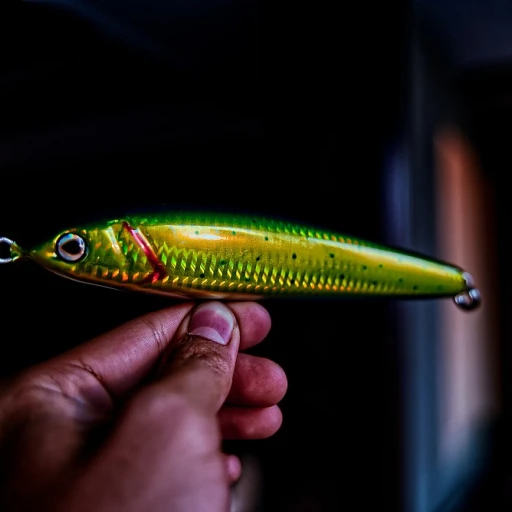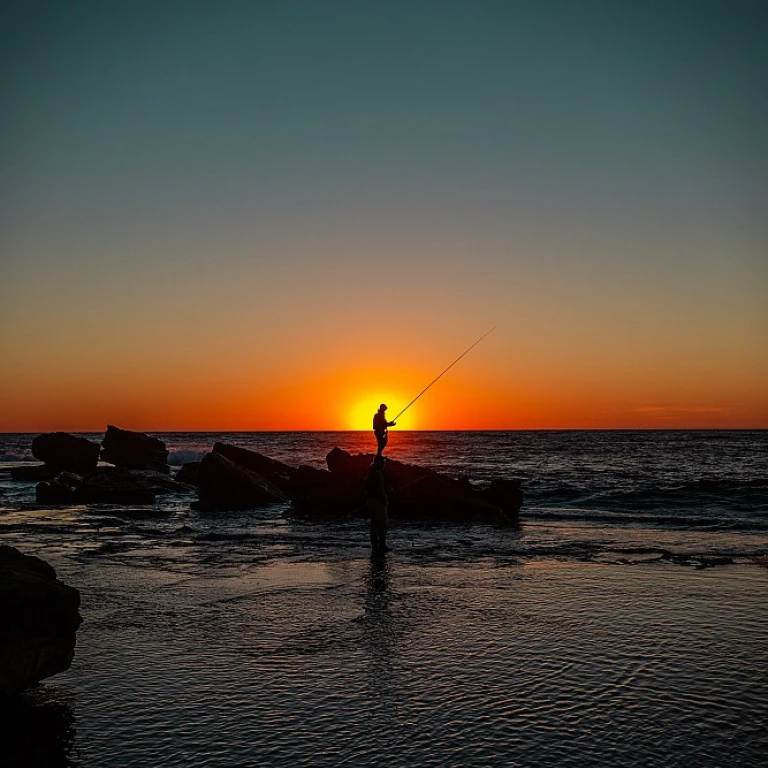Understanding the Appeal of Wood Duck Feathers
Embracing the Exquisite Beauty of Natural Feathers
Pursuing mastery in fly tying involves an appreciation for the stunning appeal of wood duck feathers, revered in the fishing community for their distinctive qualities. These feathers, often chosen by seasoned fly tyers, offer a unique blend of pattern and color that enhances the realism of fly designs. In particular, the natural, delicate sheen of wood duck flank feathers stands out in any collection.
The popularity of wood duck feathers mainly springs from their perfect combination of suppleness and strength, making them exceptional for creating realistic wings and intricate patterns on dry flies. Their natural hue, which ranges from subtle tones to vibrant whites and bronzes, lends an authentic look, particularly useful in imitating insects that attract fish.
Beyond their aesthetic allure, wood duck feathers are integral to crafting highly effective fly designs, whether replicating the purposeful movement of a wild duck or the deceiving stillness of an insect resting on water. The intricacies of these natural fibers are undeniably captivating to both fly tyers and fish alike.
If you are eager to delve deeper into the art of fly design, understanding the significance of feathers can offer transformative insights
into mastering such patterns. For those looking to elevate their fly tying skills, wood duck feathers certainly present alluring opportunities within the fishing craft, inviting scrutiny and admiration alike from avid fly enthusiasts.
As you explore this craft, other sections of this article will unveil ways to source top-quality materials and explore techniques and patterns that celebrate these splendid feathers.
Sourcing Quality Wood Duck Feathers
The Quest for Premium Duck Feathers
Finding top-quality wood duck feathers can be both rewarding and challenging for fly tying enthusiasts. These feathers are sought after due to their unique attributes, which contribute significantly to the art of creating effective and visually appealing flies.
When sourcing wood duck feathers, it is vital to identify reliable suppliers who offer feathers that maintain the natural beauty and integrity of the materials. Whether you seek hues that mimic the authentic shade of the wood duck or dyed variations, investing in premium duck feathers is key to successful fly tying.
Duck feathers, particularly those from the wood duck and the mallard, provide exceptional properties for tying. The wood duck's flank feathers, renowned for their striking patterns, and the functional utility of mallard flank feathers, owing to their consistent structure, make them indispensable additions to any fly tier's collection.
Here are some considerations when acquiring quality duck feathers for fly tying:
- Natural vs. Dyed: Decide if you need natural colored feathers or dyed variants to achieve specific aesthetics for your fishing flies.
- Source Reputation: Purchase from reputable sources that provide high-grade feathers, ensuring durability and appearance.
- Price Considerations: Understand that prices can vary based on feather quality and rarity; however, paying a regular price may often guarantee access to better materials.
In the world of fly tying, wood duck feathers can transform your experience. For more insights on how these feathers enhance your fly fishing endeavors, consider exploring the
versatility of small bass flies for a comprehensive understanding of how specialized tying materials blend with broader fishing strategies.
Ultimately, securing superior wood duck feathers not only elevates your craftsmanship but also contributes to a more satisfying and effective fly fishing experience.
Techniques for Using Wood Duck Feathers in Fly Tying
Mastering Fly Tying with Wood Duck Feathers
The intricate art of fly tying reaches a new level of finesse when using wood duck feathers. Known for their unique texture and color, these feathers serve as a prized component in fly fishing for many enthusiasts.
Wood duck flank feathers offer a naturally barred pattern, which adds life-like movement to flies, closely mimicking the appearance of natural insects. This characteristic is especially appealing for tying materials in dry fly patterns, providing an edge when crafting flies such as the Comparadun and the Soft Hackle. When using wood duck, every feather is meticulously selected for its quality and intricate detail, ensuring that your flies are as enticing as possible to targeted fish species.
When incorporating these feathers, the common practice is to carefully cut the duck flank feathers to an appropriate size, ensuring that they fit the scale and design of the fly wings being created. The mossy brown coloration is a favorite among anglers, particularly for creating delicate bodies and realistic wing portions on dry flies.
For enthusiasts new to this craft or seasoned pros seeking to refine their techniques, patience and practice with wood duck flank feathers will build skill and improve fly results. Videos and online tutorials can be a valuable resource in this regard.
Additionally, expanding your fly fishing gear to include modern accessories can enrich your outdoor ventures. Consider exploring options like advanced grilling equipment for your fishing trips.
Discover more ways to enhance your fishing experience.
Ultimately, mastering the use of wood duck feathers in fly tying not only contributes to more successful fishing expeditions but also deepens your appreciation for this beloved sport.
Popular Fly Patterns Using Wood Duck Feathers
Patterns That Capture the Essence of the Wood Duck
Wood duck feathers are prized elements in fly tying, featured in numerous classic and modern fly patterns. Incorporating these feathers can lend both aesthetic and practical benefits to your flies. Here, we delve into popular patterns that utilize this exquisite material.
One of the most renowned patterns using wood duck flank is the Woodduck Winged Yellow Sally. This dry fly pattern is particularly effective during hatches of smaller yellow stoneflies. The wood duck provides a natural appearance, enhancing its realistic presentation on the water.
Another classic example is the Catskill Dry Fly, where wood duck flank feathers craft exceptionally natural looking wings. This style of fly is a testament to the elegant simplicity brought by using quality natural materials like wood duck.
In contrast, the Royal Coachman, although traditionally tied with mallard or bronze mallard, may utilize dyed wood duck for a tweak in realism and flair. The adaptability within tying patterns allows tier members to explore creativity and personalized messaging in their flies.
Beyond these classics, wood duck feathers can also be found in some nymph patterns. Their stiffness and color create lifelike leg and antenna imitations, critical elements in fly fishing where presentation is king.
Whether sticking to tradition or venturing into custom designs, wood duck flank feathers offer an authentic touch, promising to open a new window of potential in your fly tying adventures. Even amidst the challenges in sourcing and price, their timeless appeal guarantees they will remain a top choice. This dedication towards enhancing fly patterns keeps the allure of wood duck alive in the ever-evolving world of fishing.
Challenges and Solutions in Using Wood Duck Feathers
Overcoming Challenges with Wood Duck Feathers in Your Fly Creation
Using wood duck feathers, particularly the flank feathers, in fly tying elevates the artistry and effectiveness of any fly. However, this doesn't come without its own set of challenges. Here, we look into some common issues and their solutions.
Fly tiers often cite the fragility and softness of duck flank feathers as one of the main hurdles. These feathers, while visually stunning with their natural barring, can be delicate to handle. To combat this, many artisans recommend reinforcing the feathers with a light spray of fixative or working gently when incorporating them into flies, especially in creating wings.
Price is another consideration. The allure of wood duck feathers does come at a premium, especially compared to more widespread materials like mallard feathers. Finding the best quality at a regular price requires some savvy sourcing. Tiers can often negotiate or purchase in bulk from reputable suppliers to offset the cost, ensuring that their treasured materials maintain high standards without breaking the bank.
Another challenge is the variability in color and quality of dyed feathers. Some prefer the authenticity of feathers natural in hue, but dyed options offer a wider spectrum for creative projects. It's essential to select dyes that maintain the vibrancy and natural luster of the feathers without compromising their integrity. Opt for top-quality dyed selections that mimic the natural look of wild duck patterns.
Having a reliable collection of tying materials, including duck feathers from species like mallards and bronze mallard, complements your wing and dry fly designs, offering you alternative solutions should wood duck supplies become scarce or overpriced.
For beginners, tackling the tying of complex flies with wood duck feathers can feel daunting. Membership in fly tying groups provides an invaluable window into shared experiences, tips, and video tutorials. These community resources are a treasure trove for both problem-solving and learning about new techniques.
By addressing these challenges head-on, fly tiers can continue to leverage the unique properties of wood duck flank feathers, elevating their craft while preserving the timeless appeal of these exquisite materials.
The Future of Wood Duck Feathers in Recreational Fishing
The Evolving Role of Wood Duck Feathers in Fly Tying
The recreational fishing industry has long marveled at the unique qualities that wood duck feathers bring to fly tying. However, the future of these coveted materials is not without its challenges and potential shifts. As demand continues to rise, primarily due to their exquisite appearance and the effectiveness of flies crafted with these feathers, several factors may influence their availability and usage.
Sustainability has become a key concern among fly tying enthusiasts and suppliers. While the appeal of natural wood duck feathers, particularly the unique pattern of the flank feathers, remains strong, there's increasing pressure on eco-friendly sourcing. This could lead to enhanced regulatory measures and potential shifts towards ethical harvesting practices, ensuring that the supply of these feathers does not negatively impact wild duck populations.
Moreover, as highlighted in previous discussions, the variance in the quality and price of feathers can greatly influence fly tying experiences. Flank feathers, such as those from the wood duck and bronze mallard, are particularly susceptible to fluctuation in accessibility. This volatility might prompt innovation within the industry, leading to the development of dyed alternatives that mimic the natural beauty of wood duck feathers without compromising on quality.
Furthermore, technological advancements could play a significant role in the future. New techniques in fly tying might emerge, utilizing synthetic materials that replicate the specific characteristics of wood duck feathers, such as their buoyancy and visual appeal on a dry fly. This could open up a window of possibilities for creating effective fly patterns without relying exclusively on natural resources.
Ultimately, the allure of wood duck feathers will likely continue to captivate fly tiers, offering both a challenge and an opportunity to adapt. While natural materials remain irreplaceable for many, the industry must navigate these changes with innovation and respect for the environment, ensuring that future generations of anglers can continue to enjoy the art of fly tying with top-quality materials.

